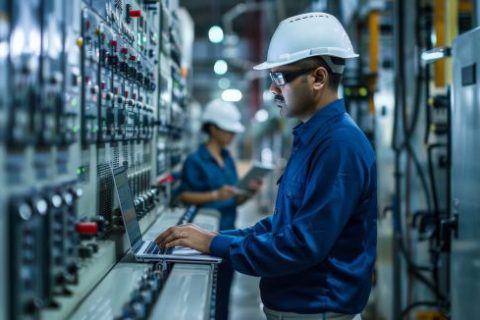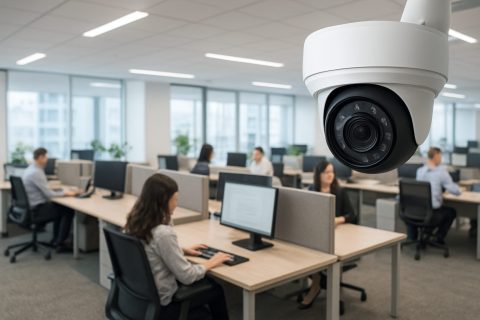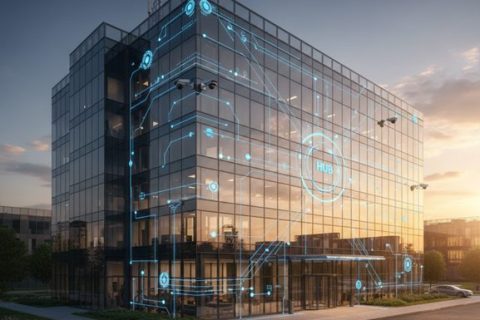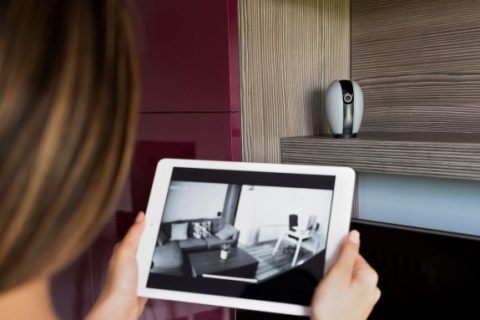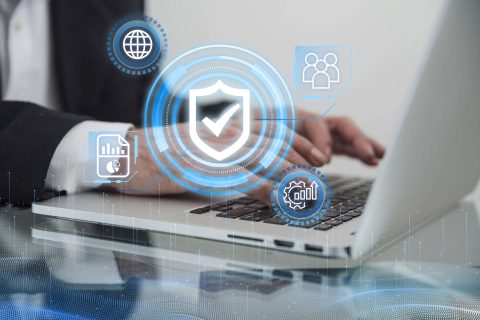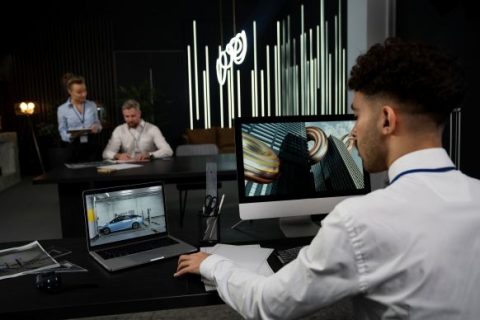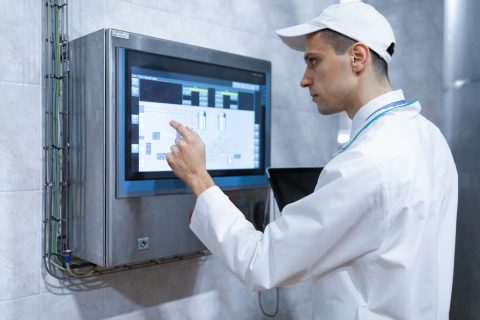What You’ll Learn About ELV & Automation Systems UAE
In this blog, readers will dive into the world of elv and automation systems uae and understand why these technologies have become indispensable for modern homes, commercial towers, and large-scale infrastructure projects across the Emirates. You’ll discover key definitions, best practices, and the major benefits driving widespread adoption from improved safety to operational efficiency.
We’ll guide you through a structured journey: first, by defining ELV systems and detailing their standards; next, by exploring the latest automation technology trends; then, by examining seamless integration solutions; and finally, by showcasing how businesses can enhance operations and what the future holds. Stay tuned for real-world use cases, technical insights, and practical recommendations.
Demystifying ELV Systems in the UAE: Components, Standards & Benefits
ELV systems, short for Extra-Low Voltage systems encompass a variety of installations that operate at low electrical voltages. Typical components include:
- Fire alarm and detection systems
- CCTV and surveillance cameras
- Access control and intercoms
- Public address and voice evacuation
- Structured data and Wi-Fi networks
Unlike traditional low-voltage installations, ELV systems prioritize digital communication, centralized monitoring, and networked control. In the UAE, particularly in Dubai and Abu Dhabi these deployments must comply with regulations such as DGBC (Dubai Green Building Codes) and local civil defense standards to ensure highest safety and performance.
Key benefits of ELV systems include enhanced occupant safety through early-warning fire alarms, centralized monitoring for quick incident response, scalability for future expansions, and unified connectivity that reduces wiring complexity. By adhering to UAE quality standards, project owners can guarantee reliable operation in both residential and commercial developments.
Exploring Automation Technology: From Smart Living to Smart Business
The UAE’s automation technology sector has evolved rapidly, fueled by government-led initiatives like Smart Dubai and Abu Dhabi Digital Authority. Modern solutions now range from Internet of Things (IoT) lighting and HVAC controls to smart parking systems and advanced building management systems (BMS).
Several automation innovations making waves include:
- IoT-enabled lighting that adjusts brightness and color temperature
- AI-driven energy management platforms optimizing electricity consumption
- Smart parking sensors guiding drivers to available spots in real time
- Predictive maintenance algorithms for major mechanical systems
Adopting these solutions yields numerous advantages: improved occupant comfort via personalized environmental settings, reduced utility bills through automated energy scheduling, and fewer unexpected breakdowns thanks to predictive alerts. For example, luxury villas in Palm Jumeirah now feature motorized curtains that integrate with sunrise/sunset schedules, while high-rise office towers leverage AI-based climate control to maintain optimal temperatures year-round.
Integration Solutions for ELV & Automation Systems UAE
Deploying ELV subsystems and standalone automation platforms in isolation often leads to silos, multiple dashboards, separate maintenance routines, and higher operational costs. To counteract these inefficiencies, developers are embracing integration solutions that unify control under a single pane of glass.
Popular integration approaches include:
- Centralized dashboards aggregating CCTV, access control logs, and BMS data
- Supervisory Control and Data Acquisition (SCADA) systems for complex facilities
- Unified communication protocols like BACnet, Modbus, and KNX
- Middleware platforms that translate data between heterogeneous systems
By designing integration architectures with redundancy, cybersecurity measures, and clear network segmentation, certified integrators ensure seamless commissioning and reliable long-term performance. A well-integrated environment means facility managers can adjust lighting scenes, track visitor access, or monitor air handling units from the same interface making operational workflows more efficient and user-friendly.
Business Operation Enhancement through ELV & Automation Systems
Businesses across the UAE are leveraging elv & automation systems uae to transform their daily operations. Key benefits include boosted workforce productivity, minimized downtime, strengthened security, and substantial cost reductions. Consider these metrics:
- Up to 30% reduction in energy use via automated lighting and HVAC scheduling
- Average 50% faster incident response times with integrated alarm and CCTV monitoring
- 20% decrease in maintenance costs through predictive alerts and condition-based servicing
Mini-case studies demonstrate real-world impact. A major logistics hub in Jebel Ali implemented automated warehouse controls and real-time asset tracking, cutting operational costs by 20% and improving order fulfillment speed by 25%. Meanwhile, a downtown office complex integrated fire alarm, access control, and visitor management into one unified solution, enhancing occupant safety and reducing security staffing requirements by 15%.
Future Outlook & Call to Action
Looking ahead, the convergence of ELV systems and automation technology will accelerate with innovations such as 5G-enabled sensors for ultra-fast data transfer, digital twins for predictive facility modeling, blockchain-based security for data integrity, and deeper AI integration in building automation. Early adopters both businesses and homeowners, stand to benefit from lower operating costs, improved sustainability, and enhanced user experiences.
We’d love to hear your thoughts: Have you implemented ELV or automation solutions in your UAE property? Share your experiences, ask questions, or discuss emerging challenges in the comments below. If you found this breakdown helpful, please share it with colleagues and friends interested in modernizing their environments.
Frequently Asked Questions
What does ELV stand for and what are its typical components in the UAE?
ELV stands for Extra-Low Voltage. In the UAE, ELV systems include fire alarms and detection, CCTV and surveillance cameras, access control and intercoms, public address/voice evacuation, and structured data and Wi-Fi networks.
How do ELV systems differ from traditional low-voltage installations?
Unlike conventional low-voltage wiring, ELV systems prioritize digital communication, centralized monitoring, and networked control. They use IP-based protocols and unified dashboards rather than point-to-point wiring.
Which regulations and standards govern ELV deployments in the UAE?
ELV installations in Dubai and Abu Dhabi must comply with Dubai Green Building Codes (DGBC), local civil defense requirements, and other municipal regulations to ensure fire safety, electromagnetic compatibility, and performance.
What are the main benefits of implementing ELV systems in buildings?
Key benefits include enhanced occupant safety via early-warning fire alarms, centralized incident monitoring and faster response, simplified wiring for scalability, and unified connectivity that reduces operational complexity and maintenance costs.
What are the key automation technologies used in the UAE?
Popular automation solutions include IoT-enabled lighting and HVAC controls, AI-driven energy management platforms, smart parking sensors, advanced building management systems (BMS), and predictive maintenance algorithms.
How do IoT and AI-driven solutions enhance building operations?
IoT sensors provide real-time data on occupancy, lighting, and climate, while AI analyzes usage patterns to optimize energy consumption, adjust environmental settings automatically, and predict equipment issues before failures occur.
Why is integrating ELV and automation systems important?
Integration prevents siloed dashboards and separate maintenance routines. A unified platform allows facility managers to control CCTV, access logs, lighting scenes, and HVAC from one interface, reducing costs and streamlining operations.
What integration approaches are commonly used in UAE projects?
Common approaches include centralized dashboards, SCADA systems for large facilities, unified protocols like BACnet/Modbus/KNX, and middleware platforms that translate data between disparate systems.
What is predictive maintenance and how does it work?
Predictive maintenance uses sensors and analytics to monitor equipment health in real time, detect anomalies or wear patterns, and trigger alerts for servicing before breakdowns occur, minimizing unplanned downtime.
How can businesses quantify the impact of ELV and automation on operations?
Typical metrics include up to 30% energy savings via automated HVAC and lighting schedules, 50% faster incident response through unified alarms and CCTV, and 20% lower maintenance costs from predictive servicing.
What emerging technologies will shape the future of ELV and automation?
Upcoming innovations include 5G-enabled sensors for ultra-fast data transmission, digital twins for virtual facility modeling, blockchain for secure data integrity, and deeper AI integration for autonomous building management.
Can ELV and automation systems be scaled for future expansions?
Yes. By using standardized protocols and modular architectures, ELV and automation deployments can accommodate additional sensors, devices, or building blocks without major rewiring or platform overhauls.
What is a middleware platform in the context of system integration?
A middleware platform acts as a translator between different systems or protocols, ensuring data from CCTV, access control, BMS, and other ELV subsystems flows seamlessly into a single management interface.
How can property owners start implementing ELV and automation solutions?
Owners should assess their requirements, consult certified integrators for site surveys, choose compliant hardware/software that meets UAE standards, design a scalable integration architecture, and plan phased deployments with testing.

